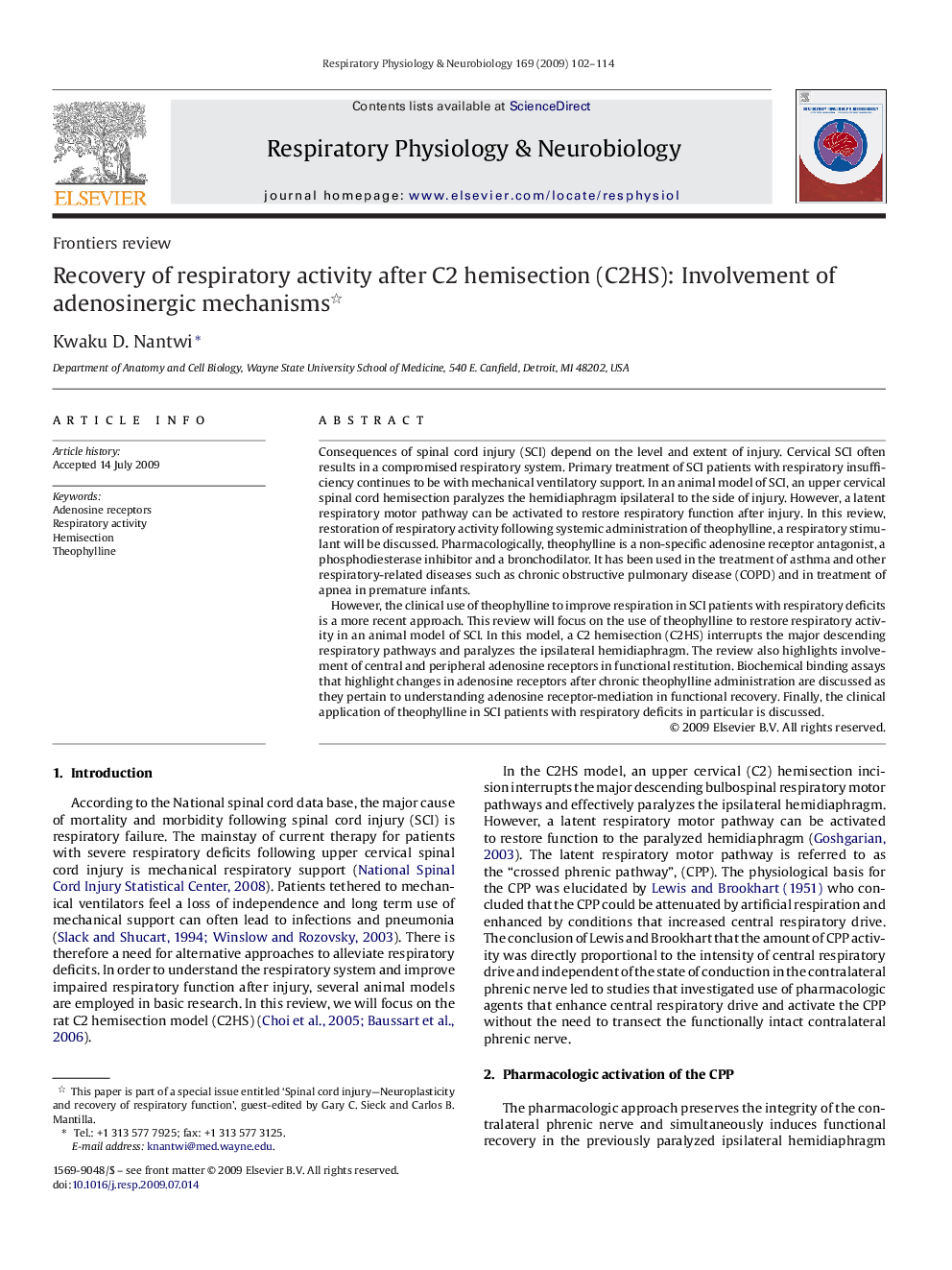| Article ID | Journal | Published Year | Pages | File Type |
|---|---|---|---|---|
| 2847723 | Respiratory Physiology & Neurobiology | 2009 | 13 Pages |
Consequences of spinal cord injury (SCI) depend on the level and extent of injury. Cervical SCI often results in a compromised respiratory system. Primary treatment of SCI patients with respiratory insufficiency continues to be with mechanical ventilatory support. In an animal model of SCI, an upper cervical spinal cord hemisection paralyzes the hemidiaphragm ipsilateral to the side of injury. However, a latent respiratory motor pathway can be activated to restore respiratory function after injury. In this review, restoration of respiratory activity following systemic administration of theophylline, a respiratory stimulant will be discussed. Pharmacologically, theophylline is a non-specific adenosine receptor antagonist, a phosphodiesterase inhibitor and a bronchodilator. It has been used in the treatment of asthma and other respiratory-related diseases such as chronic obstructive pulmonary disease (COPD) and in treatment of apnea in premature infants.However, the clinical use of theophylline to improve respiration in SCI patients with respiratory deficits is a more recent approach. This review will focus on the use of theophylline to restore respiratory activity in an animal model of SCI. In this model, a C2 hemisection (C2HS) interrupts the major descending respiratory pathways and paralyzes the ipsilateral hemidiaphragm. The review also highlights involvement of central and peripheral adenosine receptors in functional restitution. Biochemical binding assays that highlight changes in adenosine receptors after chronic theophylline administration are discussed as they pertain to understanding adenosine receptor-mediation in functional recovery. Finally, the clinical application of theophylline in SCI patients with respiratory deficits in particular is discussed.
